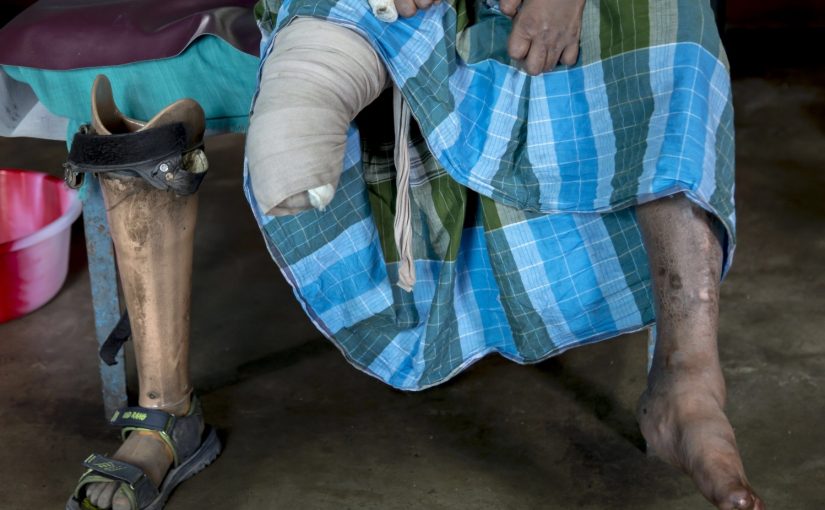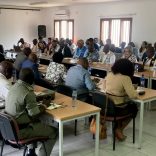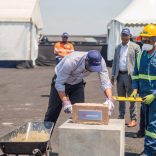Mozambique: Cabo Delgado needs $1.2M to tackle rainy season impacts - INGD
CPLP: Community could help eliminate leprosy and discrimination – UN rapporteur

File photo: Lusa
The UN Special Rapporteur on leprosy, Portuguese Alice Cruz, wants a CPLP strategy to eliminate the disease and discrimination, stressing that some of the member states have a high incidence of this illness.
The Community of Portuguese Language Countries (CPLP) has “high rates of leprosy, although there is no strategy of the CPLP itself in relation to leprosy, which I regret,” said Alice Cruz, in an interview with Lusa from Ecuador, where she lives.
“There are important CPLP countries that are among the 23 WHO priority countries for leprosy. We have Brazil, which is simply the country with the highest relative incidence. Then we have Angola, Mozambique and we have other CPLP countries that, although they do not have such significant numbers, have social issues of extreme exclusion of those affected,” she said.
The first Special Rapporteur on the Elimination of Discrimination against People Affected by Leprosy and their Family Members, a role she assumed in 2017, has identified “an important role to eliminate this discrimination and for the exchange of knowledge between countries” in the CPLP.
“There are CPLP countries that are doing a very good job with regard to leprosy. What is curious is that it is in different areas. If this space for the exchange of knowledge and good practices existed, I think it would be extremely beneficial, not only to eliminate discrimination but also the disease,” he said.
An “important fact” about the community that Alice Cruz is keen to stress is that “there are no CPLP countries with discriminatory laws” in relation to leprosy – there are more than 100 worldwide.
“From the point of view of what we call legal harmony, between national laws and international human rights law, in fact, there has been important progress in the CPLP countries. There are key areas, which are really social and economic rights,” he said.
Classified by the UN as a neglected tropical disease and associated with poverty, the distribution of leprosy also goes hand in hand with the capacity of countries to guarantee their citizens equitable access to goods, resources and opportunities.
Therefore, “leprosy is found in countries with greater structural difficulties and, within countries, it also has a higher incidence in sub-national spaces that are more associated with poverty and lack of access”.
According to Alice Cruz, “Brazil has the second-highest absolute incidence of leprosy and it is the first country in the world with the highest relative incidence of leprosy”, with an important number of cases diagnosed in some countries in South and Central America, but what really stands out in the region is Brazil.
Leprosy “remains very important in the Asian region. India stands out because it is the country with the highest absolute number of cases, but then there are other countries in the Asian region that are important – Indonesia, Nepal, Bangladesh.”
“Asia is a very important factor in terms of incidence, but also in terms of institutionalised discrimination because most of the discriminatory laws that are still in force – and which lack any scientific justification whatsoever – are found precisely in Asia and the Pacific,” she said.
Regarding the African continent, Alice Cruz classified the region as “an area of great concern, especially because it is highly likely that the figures that are reported to the World Health Organization do not correspond to reality and that there is a strong hidden endemic in African countries.”
“Leprosy is a disease that is so strongly associated with exclusion, but at so many levels, that it is a gigantic struggle even to ensure access to diagnosis,” he said.
According to the rapporteur, “many times these are populations faced with a health problem, who do not go to public health establishments, they go to traditional doctors”.
“The African context is one where it is absolutely necessary to think about intercultural public health strategies because often it is traditional doctors who have access to these people and can make the first diagnosis,” she said.
In Africa, “the numbers that exist are worrying, there are many priority countries that are in Africa, they raise questions: to what extent they reflect the reality, although there are countries that make a very big effort, leprosy is a neglected tropical disease and these diseases are very associated with weaknesses in health systems and that is the case of the African continent”.
Every year there are about 200,000 new cases of leprosy worldwide, according to United Nations figures.
The World Day Against Leprosy (leprosy) is marked this year on 30 January. The day was established in 1954 by the United Nations, which stipulated that it should be celebrated every year on the last Sunday of January.












Leave a Reply
Be the First to Comment!
You must be logged in to post a comment.
You must be logged in to post a comment.